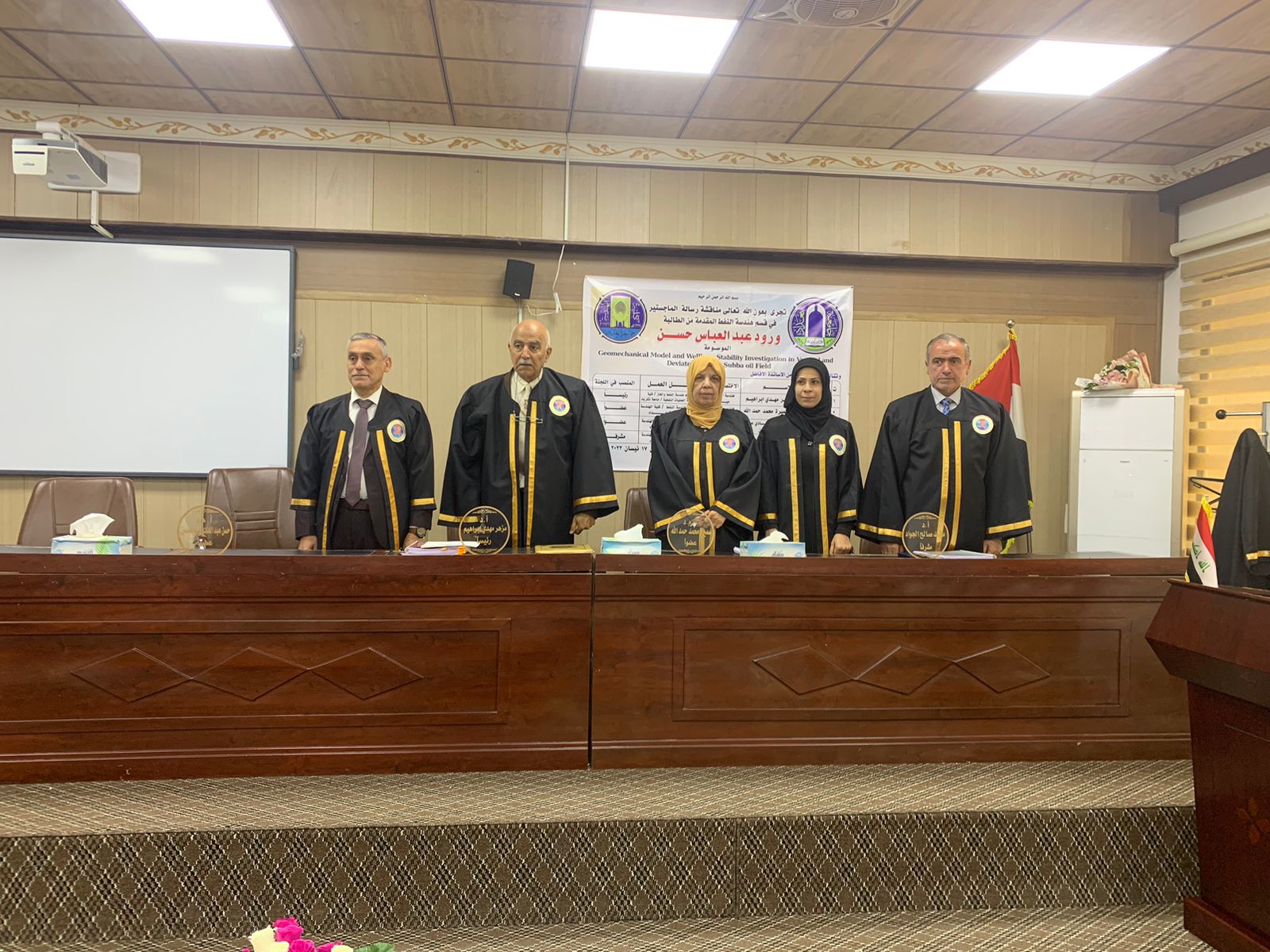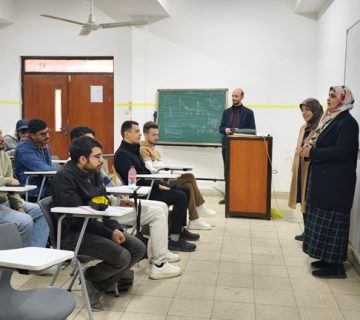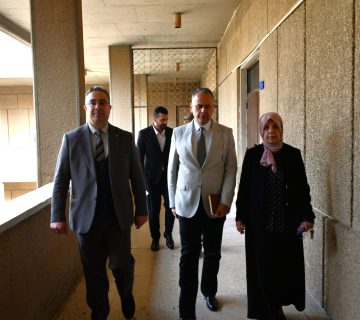Geomechanical Model and Wellbore Stability Investigation in Vertical Wells / Subba Oilfield.
During drilling operations in the Subba oil field, wellbore stability is the primary issue. Many difficulties are caused by the instability of the wellbore, among them: (inefficient hole cleaning, tight hole, stuck pipe, mud losses, caving, bad cementing, and well kick or blowout). This is increasing the Non Productive time (NPT) and increased well-drilling expenditures, thus, the operator’s primary objective is to design a suitable drilling program that mitigates these issues for future well drilling.
The study aims to construct a 1D mechanical earth modeling, and understanding the distribution of the pore pressure, mechanical rock properties and far field stress and insitu stresses throughout the Subba oil field for an optimum selection of mud weights that compatible with the planned, the 1D integrated mechanical earth model was built to predict the wellbore failure and design optimum mud weight to improve the drilling efficiency of future wells, the model includes pore pressure, stress state, and rock mechanical parameters (such as UCS, angle of friction, Young Modulus, and Poisson Ratio). The weight of the overburden, any tectonic forces present, as well as production and injection, all result in stresses on the reservoir. To achieve this aim , the study utilized offset well data including log data (Gama Ray Logs (GR), Caliper Logs (Cal), Density Logs (RHOB), and Compressional Sonic (DTC) and Shear Sonic (DTS), Core tests, Mini-frac field tests, Drilling Reports, Mud Reports, and Mud Log Reports to estimate and calibrate the profiles of formation pore pressure, rock mechanical properties, and insitu stresses.
The study apply to Subba oil field for five wells data set through calculate all the necessary parameters to build 1D MEM using different correlations, then make necessary calibrations and statistical analysis for parameters that were calculated to select the accurate equation, finally apply 17 failure criteria (Modified Lade, Mogi-Coulomb, Drucker-Prager, Griffith, Extended Mogi, Mohr 3D, Hoek-Brown, Tresca, Mohr-Coulomb, Hoek-Brown 3D, Von Mises, Modified Wiebols-Cook, Circumscribed Druker-Prager, Inscribed Druker-Prager, Modified Griffith, Murrell, Stassi d’Alia) to find the safe mud window, then selected the suitable rock failure criteria after matching with actual well data (caliper log and drilling events) and done the statistical analysis. Thus, the construction of the 1D MEM was completed for these wells and show the resulting plots.
The results showed that the Eaton Slowness method for pore pressure give a close results to the pressure test points with Root Mean Square Error (RMSE) = 65.64 psi. John Fuller correlation was used to compute the profile of static Young’s Modulus which the most realistic compared with laboratory tests, while Plump Bradford correlation gave higher Static Young Modulus than Dynamic Young
Modulus. For unconfined compressive strength several models have been investigated including (Coates Denoo 1963, MCNally 1987, Vernic 1993, Brad
Ford 1996, static Young’s Modulus 2002, Moos 2003 and Novel 2021), after comparing with the laboratory test data the result was the Young’s Modulus correlation is the closest to the laboratory results with RMSE = 53.23 psi. Modified Lade criterion was the most appropriate for target formations, this criterion had a higher level of matching between the predicted borehole instability with field observations displayed by caliper and RMSE = 271.4 psi. On the other hand, the Mohr Coulomb criterion was inadequate due to the fact that it did not match the shear failure from the caliper log. The obtained results revealed that the shale layers are prone to fail more than others.
Based on the results of this study and in comparison with the mud window that used in drilling operations in the field, it is necessary to change the mud window and adopt the results of this study in drilling new wells (Tanuma formation from 11.3 to 12 ppg, Khasib formation from 10.4 to 12.8 ppg, Rumaila formation from 10.6 to 13.3 ppg, Ahmadi Formation from 10.8 to 12.5 ppg, Nahr Umar formation from 10.6 to 12.5 ppg and Zubair Formation from 11.1 to 12.5 ppg) to reduce instability problems to the lowest possible extent, thus reducing the NPT and reducing the cost of drilling.
Recommendations
The recommendation for future work on the study has based on the results of this study:
- Implement the study results in the wells planned to be drilled in Subba field by adopting the gradually increasing the assigned mud weight.
- The established wellbore stability model is appropriate to other field situations utilizing a similar methodology that could be modified to the specific field conditions.
- Construct a robust three-dimension geomechanical model (3D MEM) based on these study elements which will introduce a great integration between the structural geological model and the mechanical earth model to provide better and more extensive wellbore stability assessment.







